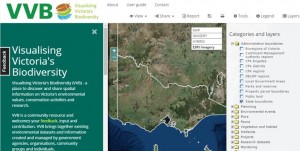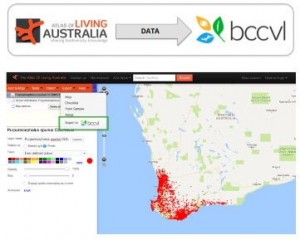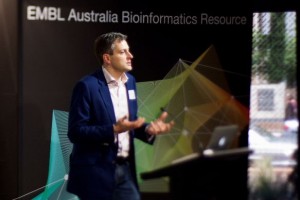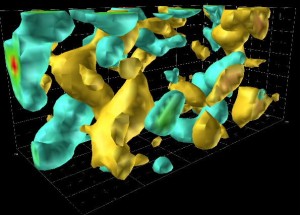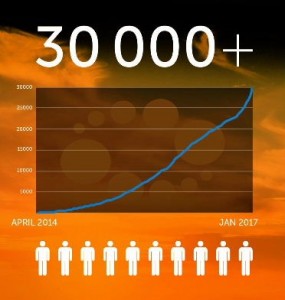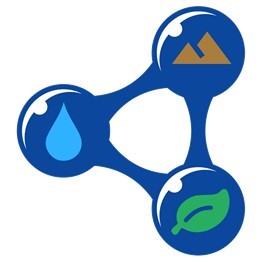Jan/Feb 2017 national eResearch newsletter
Welcome to the AeRO eResearch Newsletter
Australian Policy Online (APO) Joins AeRO
AeRO is very excited to announce its first new member for 2017, Australian Policy Online (APO: http://apo.org.au/). APO is a significant national eResearch capability for our community, being a research database and alert service providing free access to a wide range of policy papers, reports, roadmaps, plans and statistics across Australasia and globally. AeRO and APO have started working together on a dedicated eResearch and research infrastructure collection within the APO framework. More details are at http://aero.edu.au/apo-joins-aero/. Contributions and other pointers are very welcome, and will help grow the value of this national collection.
Machine Learning in Astronomy
An informal group has started for those interested in developing techniques for machine learning in astronomy and astrophysics. It covers areas such as source extraction and classification, redshift measurement, transient detection, and detecting the unexpected. A particular focus is on extracting science from data from large survey projects such as CSIRO’s new $165m Australian Square Kilometre Array Pathfinder (ASKAP). The group is hosted by CSIRO and Western Sydney University, but is an open, informal group, and any researchers in this area are welcome to join. It meets weekly by Zoom teleconference. Details are on MLprojects.pbworks.com
———-
Launch of Waterwatch and EstuaryWatch
The Centre for eResearch and Digital Innovation at Federation University Australia recently completed development work on the websites for two prominent Victorian citizen science programmes: Waterwatch and EstuaryWatch. Both are well-established, important community engagement programmes, connecting local Victorian communities with water issues including sustainability, water management and the health of local waterways.
The websites now provide access to current information and data through innovative technical tools and data portals. Core to their functionality are re-designed databases, rapid data interrogation tools and interactive maps. Further, direct upload and download of data about local waterways and estuaries facilitates more rapid dissemination of program monitoring and achievements.
For further information visit www.estuarywatch.org.au and www.vic.waterwatch.org.au
Or contact CeRDI’s Dr Birgita Hansen: b.hansen@federation.edu.au
———-
Visualising Victoria’s Biodiversity
A new, open-access community resource – Visualising Victoria’s Biodiversity (VVB) – was recently launched with the aim of facilitating information sharing and discovery about Victoria’s environmental values, conservation activities and research.
VVB is an initiative of Federation University Australia’s Centre for eResearch and Digital Innovative and has been supported by funding from the Helen Macpherson Smith Trust. VVB consolidates access to spatial environmental datasets and information – created and managed by government agencies, organisations, community groups and individuals – into a user friendly and interactive platform. VVB offers a range of online support tools for accessing and generating key environmental information.
For further information please visit www.vvb.org.au or contact CeRDI’s Mr Rob Milne: r.milne@federation.edu.au
———-
Our Coast Website Launch
The Our Coast website, developed by the Centre for eResearch and Digital Innovation (CeRDI), Federation University Australia, offers local government and communities in the Bellarine Peninsula and Geelong with information about planning for a changing climate and of the potential impacts this change may have on the local region through rising sea levels, storm surges and coastal erosion.
The project has an extensive community engagement focus and was supported by the Victorian Government, the City of Greater Geelong, the Borough of Queenscliff and local committees of management.
CeRDI’s role within the project included the development of a simple Coastal impact solutions tool (http://www.ourcoast.org.au/solution_matrix.php) with Data61 involved in the development of a number of Visualisations (available as Videos on the resources page).
Further information is available at www.ourcoast.org.au or contact CeRDI’s Andrew MacLeod: a.macleod@federation.edu.au
———-
BCCVL’s Species Distribution Models
Species Distribution Models play a critical role in synthesising our understanding of the natural world and making forward projections into novel conditions. The output of a model is only as valid as the data that is put into it. So, good data practices are important. With this in mind, the BCCVL has teamed up with the ALA to better integrate ALA’s Spatial Portal to BCCVL’s modelling capability. This new link will provide the ability to find, filter and clean occurrence data in the ALA Spatial Portal and push this directly to the BCCVL ready for use in models! This integration promotes good data practices and will encourage more robust model outputs. Read more at http://www.bccvl.org.au/1019-2/.
———-
Digital Science Announces a New Module of Global Grants Database, Dimensions
The Dimensions database, containing information on millions of completed and ongoing research projects with over $1 trillion USD in global research funding, will be made available directly to researchers for the first time. Users will be able to see how their work fits into the bigger picture of funded research.
You can find out about this news at https://www.digital-science.com/blog/news/new-dimensions-module-researchers-provides-insights-global-funding-landscape/
We are hosting a webinar on Thursday 9 Feb 3:30pm GMT / 10:30am EST to introduce the new platform and its capabilities. Register for the webinar at
https://www.digital-science.com/blog/events/join-webinar-introducing-new-dimensions-module-researchers/
———-
Upcoming eRSA Workshops
The Nectar Research Cloud
This workshop will provide a practical introduction to the cloud and all the basic tools you need to know to run your first cloud computer. The workshop is aimed at beginners to the Nectar Research Cloud. Date: Thursday 9 February, 12.30pm – 3.30pm, Adelaide University. Register at https://www.eventbrite.com.au/e/workshop-the-nectar-research-cloud-a-practical-introduction-tickets-30874676990
RStudio in the Cloud
This workshop demonstrates a simple way to get started using R-Studio in the Nectar cloud. The workshop is aimed at researchers who use the R statistical package and would like to apply cloud computing to their R analyses. Date: Thursday 23 February, 12.30pm – 3.30pm, Adelaide University. Register at https://www.eventbrite.com.au/e/workshop-rstudio-in-the-cloud-tickets-30875816398
Using High Performance Computing
This course demonstrates how to use HPC and Cloud Clusters to enhance research outcomes. This workshop is for new users wanting a complete introduction to HPC. Date: Thursday 9 March, 12.30pm – 3.30pm, Adelaide University. Register at https://www.eventbrite.com.au/e/workshop-using-high-performance-computing-a-practical-introduction-tickets-30876437255
———-
eRSA Welcomes Naomi Setchell, User Experience Coordinator (Digital Humanities)
eRSA recently welcomed Naomi Setchell to the eRSA team, as its new User Experience Coordinator (Digital Humanities).
Her role sees her working with researchers in the Social Sciences and Humanities, and heritage professionals, to improve access to cultural collections using digital technologies.
Contact Naomi to see how she can help at naomi.setchell@ersa.edu.au.
———-
eRSA National Project to Support the Cultures and Communities Sector
The Cultures and Communities project aims to enable archives, cultural heritage institutions and research projects to share standardised data and bring together dispersed data collections to truly enhance the research experience. eRSA are working with the Tasmanian State Library and Archives & Heritage Office (TAHO) to exchange ideas and discuss opportunities for the project’s development. The first API use case between eRSA, the Prosecutions Project at Griffith University and TAHO will focus on convict records, which are notoriously difficult for researchers and family historians to trace as they as they are often widely distributed.
Read more at https://www.ersa.edu.au/ersas-visit-tasmanian-state-library-archives-heritage-office-taho/
———-
Inaugural EMBL-ABR All Hands Meeting, December 2016
On 7 December representatives from each of the Nodes of the EMBL-ABR (European Molecular Biology Laboratory – Australia Bioinformatics Resource), and many others interested in bioinformatics for life sciences and medical research, came together in Melbourne to hear a range of presentations and then join in group discussions to generate a list of priorities for EMBL-ABR for 2017. All presentations and group discussion summaries are now online.
See the full item at https://www.embl-abr.org.au/presentations-all-hands/
———-
NCI Joins OpenPOWER Foundation
NCI has become the first Australian organisation to join the OpenPOWER Foundation, a global open technical community enabling collaborative development and industry growth. NCI has additionally purchased four of IBM’s latest Power System servers for High-Performance Computing to underpin its research efforts through artificial intelligence, deep learning, high performance data analytics and other compute-heavy workloads. Read more about this exciting step at http://nci.org.au/2016/12/16/nci-becomes-first-australian-organisation-join-openpower-foundation/
———-
Modelling the Behaviour of Quantum Particles
Scientists from the University of Adelaide have been modelling the behaviour of quantum particles using Raijin’s advanced computing capabilities. ARC Future Fellow Dr James Zanotti has been trying to understand protons and their quantum properties for over 15 years using the theory of Quantum Chromodynamics (QCD). To look into this question, he and his team use a computer lattice that is designed to have exactly the quantum properties they are interested in. Read more about this research at https://nci.org.au/research/investigating-properties-quantum-particles/
———-
IEEE International eScience Conference 2017 in Auckland, NZ, 24-27 October
This major international annual conference will return down-under this October, following on from the eResearch Australasia Conference in Brisbane. This conference is the premier forum world-wide to present the results of the latest research and product development. It brings together leading international and interdisciplinary research communities, developers and users of eScience applications and enabling IT technologies. Submissions are now invited; see http://escience2017.org.nz/
———-
New eBook Shows Impact of Australian Research Data
Sixteen stories about the real-life benefits of Australian research data have been compiled into a new eBook published by the Australian National Data Service (ANDS).
The stories were collected during ANDS #dataimpact campaign in 2016 (http://www.ands.org.au/news-and-events/dataimpact), which asked the research community for examples of data-intensive projects making a real-world difference.
The best of those stories have now been collated into an eBook which is available to read, download and share from the ANDS website at www.ands.org.au/dataimpact.
———-
Bringing Together Digital and eResearch Platforms is Vital
AARNet’s submission in response to the Draft 2016 National Research Infrastructure Roadmap strongly supports the bringing together of the Digital Data and eResearch platforms. These are inextricably coupled, and it is vital at this stage of the development of Research Infrastructure that there be coherence among all its eResearch elements. AARNet, the AAF and NCI/Pawsey supercomputing facilities must be explicitly and formally engaged in the definition, subsequent deployment and operation of the Australian Research Data Cloud (in addition to ANDS, RDS and NeCTAR).
Read AARNet’s submission at https://news.aarnet.edu.au/aarnets-draft-2016-research-infrastructure-roadmap-submission/
———-
New CloudStor Milestone Reached: 30,000+ Users and Growing
Researching and developing new above-the-network services to accelerate research and support new ways of working for the Research & Education sector is a core part of what is done at AARNet. The evolution of the CloudStor filesender and storage service is a great example of this. Since the project’s inception, over 30,000 users have subscribed, sent well in excess of a petabyte of files, stored well over 130 terabytes of working files, and connected together several dozen large research groups internationally.
Read more about the evolution of CloudStor at https://news.aarnet.edu.au/new-cloudstor-milestone-reached-30000-users-and-growing/
———-
Assisting Big Science with Big Data
In the past five years, AARNet’s eResearch team has grown from two to five people as the organization starts to recognize the need to educate new users and provide services that meet their needs.
“It’s all about allowing scientists to focus on doing the research and producing results of national and international significance faster, whether that be developing genetic treatments for Alzheimer’s disease or improved computer processing abilities, rather than trying to be part-time IT geniuses at the same time.”…
APNIC interviewed Brett Rosolen and David Wilde, who talked about Science DMZ and improving how universities manage large data flows. Read the full story on the APNIC blog at https://blog.apnic.net/2017/02/01/assisting-big-science-big-data/
———-
eResearch Job Vacancies and Employment Opportunities
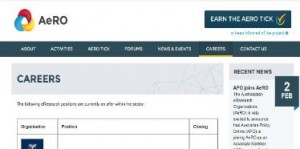
While we do not normally advertise job vacancies in this Newsletter, we should point out that AeRO has a Website that is a great source of such information (see http://aero.edu.au/eresearch-careers/). Anything submitted to the Newsletter will normally be posted to that board, as well being fed to AeRO’s much-followed Twitter Feed (@AeRO_eResearch).
———-
Linking Environmental Data and Samples – Canberra, 29 May–1st June 2017
An international symposium on environmental data and samples convened by CSIRO will bring together leading researchers in earth and environmental informatics, to establish the current state of the art in environmental science data publication and its use of modern web principles. The focus is on linking data, with a particular interest in the integration of physical samples with datasets based on these. Registration is now open; see https://csiro-enviro-informatics.github.io/environmental-data-symposium-2017/ or contact simon.cox@csiro.au for more details.
———-
Southern Farming System Probe Trax
Federation University Australia’s Centre for eResearch and Digital Innovation is collaborating with Southern Farming Systems (SFS) and CSIRO Land and Water on a project to identify how soil moisture probe data across south-eastern Australia can be delivered to farmers and their advisors in a user-friendly and decision-useful way.
The project involves the development of a user-friendly decision support interface, development and delivery of workshops, development of a ‘how to guide’ for the wider public, and evaluation to understand the project impact.
Further information including an explanatory video is available at: http://www.sfs.org.au/ProbeTrax_MoistureProbeNetwork or contact CeRDI’s Andrew MacLeod: a.macleod@federation.edu.au
———-
Format of This Newsletter
You will have noticed (certainly if you managed to get this far into the Newsletter!) that we have experimented with a new format for the Newsletter this edition, which involves a different layout, better use of graphics, etc. It probably involves about a doubling of the amount of effort that the (volunteer) Editor has to make, so we are very keen to hear from the readership if they think it is worth the extra effort. For instance, does it double your pleasure and/or interest and/or value from reading the Newsletter? Please let us know by emailing your thoughts to the Editor (Alex Reid) at editor@aero.edu.au.


